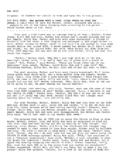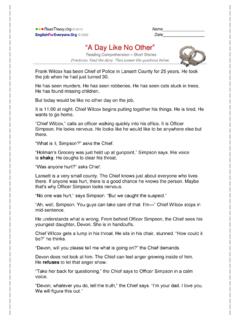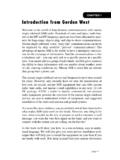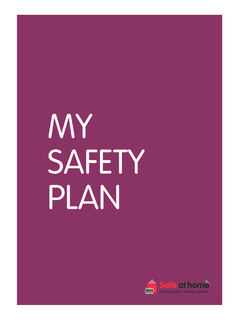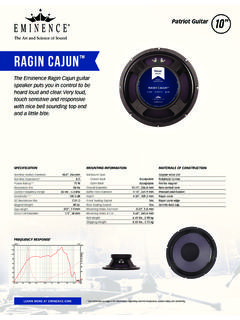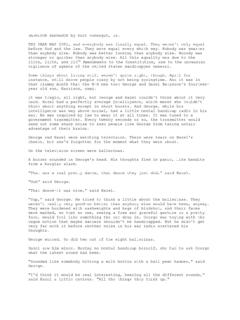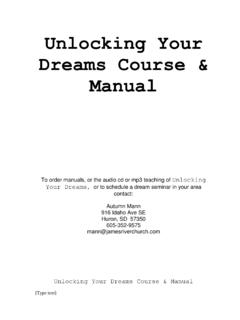Transcription of RADIO VOICE PROCEDURE - Hamnet KZN
1 RADIO VOICE PROCEDURE 1. INTRODUCTION The purpose of this document is to lay down a Standard Operating PROCEDURE ( SOP ) for all RADIO VOICE operations of this Department. All emergencies require a fast response and to eliminate undue delay all RADIO messages must be transmitted quickly and accurately. Furthermore, in adverse weather conditions or poor reception areas, operators can usually maintain communications provided the SOP is followed. 2. RADIO NETS A group of RADIO stations operating on the same channel for the purpose of communicating with each other is known as a RADIO Net There are two types of stations in a RADIO Net :- a) Net Control Station b) Field Units - comprising mobile , portable or fixed units at Police or Fire Stations The Net Control Station is responsible for RADIO discipline and the efficient relaying of messages regardless of the Rank of the operator manning the Net Control.
2 3. OPERATING TECHNIQUES Effort should be made to keep transmissions as brief as possible. Particularly important on a congested channel where multiple incidents are in progress. Think about what you are going to say prior to commencing your transmission. Have all the relevant information to hand to minimise delays in relaying full and accurate details. Transmissions should be carried out in a normal tone, keeping emotion out of your VOICE . The following speech techniques should be adopted maintain an even RHYTHM Use normal conversation SPEED Maintain normal speech VOLUME If possible, use a slightly higher PITCH Each word should be spoken CLEARLY and DISTINCTLY Maintain a constant distance from the microphone.
3 Too close will result in distortion, too far away will result in soft audio being transmitted and difficult to read in the field. It is crucial that all messages are clearly understood, therefore use natural phrases or sentences and not sent as individual words. ALWAYS LISTEN ON THE CHANNEL PRIOR TO TRANSMITTING. ONLY ONE STATION MAY TALK AT ANY ONE TIME. Spell important or difficult words using the PHONETIC ALPHABET. Never acknowledge a message passed on to you unless you have received the entire message and UNDERSTAND it.
4 NEVER GUESS or MAKE ASSUMPTIONS. If you are not sure, ask the station to REPEAT the message. 4. CAUSES OF CONGESTION ON RADIO CHANNELS FAILURE TO USE PRESCRIBED procedures FAILURE TO LISTEN BEFORE TRANSMITTING FAILURE TO FOLLOW INSTRUCTIONS ISSUED BY NET CONTROL USE OF UNAUTHORISED ABBREVIATIONS LACK OF RADIO DISCIPLINE 5. ESTABLISHING COMMUNICATIONS The Net Control Station is responsible for all communications that take place on their allocated channel of operation. Any unit wishing to converse with a station other than the Net Control must obtain permission prior to calling the unit with whom they wish to converse.
5 The Net Control may deny such permission if an emergency incident is in progress or RADIO Silence has been declared and the message to be passed is unrelated to such an incident . Any person wishing to transmit shall listen for a period long enough to satisfy themselves that they will not cause harmful interference to any other station that may be transmitting. MAKE SURE THAT THE VOLUME CONTROL IS TURNED UP SO THAT YOU MAY HEAR CHANNEL ACTIVITY. If the channel is busy and you have an URGENT message, wait for a break in transmissions and the word BREAK is used to call attention to your situation.
6 This should only be used in genuine cases where your situation is of a high priority. If this is not the case, wait until the message exchange currently in progress is complete prior to making your call. 6. RADIO TESTS RADIO tests are usually conducted on a daily basis. The quality of the transmission is rated from one to five as per the following table : The receiving station indicates that the message is totally unreadable 1 over 5 The message being transmitted is broken to the extent that only some words are heard.
7 The words put together are unintelligible 2 over 5 weak signal, Difficult to read, hovever with carefully listening, the message can be understood 3 over 5 Readable, The message can be understood with very little difficulty, but is not perfectly free of static / noise 4 over 5 Perfectly readable, loud and clear, no background noise or static 5 over 5 In addition to daily tests, Metro Fire vehicles will test when responding to an emergency incident that they have been despatched to. Eg. Delta Echo, Delta Echo, Romeo Pappa Zero Niner Testing over Reply Romeo Pappa Zero Niner from Delta Echo, 5 over 5, You are responding to.
8 Take note of the phonetic alphabet used to emphasise the call signs. TIME FORMAT All times used are in the 24 hour format of SAST ( South African Standard Time ) EXAMPLE 9 o clock in the morning would be Zero Nine hundred hours 09h00 9 o clock in the evening would be Twenty One hundred hours 21h00 After 12 noon, add 12 to the time to obtain the 24 hour format 6-15 would become 18h15 7-20 would become 07h20 11-45 would become 11h45 11-45 would become 23h45 7. PHONETIC ALPHABET The alphabet is given below, with the pronunciation given in brackets.
9 The syllables to be emphasised are underlined. A - ALPHA ( AL FAH ) N - NOVEMBER ( NO VEM BER ) B - BRAVO ( BRAH VOH ) O - OSCAR ( OSS CAH ) C - CHARLIE ( CHAR LEE ) P - PAPA ( PAH PAH ) D - DELTA ( DELL TAH ) Q - QUEBEC ( KEY BECK ) E - ECHO ( ECK OH ) R - ROMEO ( ROH ME OH ) F - FOXTROT ( FOKS TROT ) S - SIERRA ( SEE ARRA ) G - GOLF ( GOLF) T - TANGO ( TANG GO ) H - HOTEL ( HO TELL ) U - UNIFORM ( YOU NEE FORM ) I - INDIA ( IN DEE AH ) V - VICTOR ( VIC TAH ) J - JULIET ( JEW LEE ETT ) W - WHISKY ( WISS KEY )
10 K - KILO ( KEY LOH ) X - X-RAY ( EKS RAY ) L - LIMA ( LEE MAH ) Y - YANKEE ( YANG KEY ) M - MIKE ( MIKE ) Z - ZULU ( ZOO LOO ) 8. NUMERALS 0 ( ZERO ) 5 ( FIFE ) HUNDRED ( HUN- DRED ) 1 ( WUN ) 6 ( SIX ) THOUSAND ( THOU - SAND ) 2 ( TOO ) 7 ( SEVEN ) 3 ( THUH -REE ) 8 ( AIT ) 4 ( FOWER ) 9 ( NINER ) When transmitting numbers it is easy to misunderstand when sent as in a string such as a telephone number eg. 2053424. The correct PROCEDURE would be to include the phrase numbers follow prior to transmitting the numbers the previous example would then be : TOO, ZERO, FIFE, THUHREE, FOWER, TOO, FOWER, over When the numbers relate to an address in a despatch message, it is important to emphasise the individual numbers in the string to avoid misinterpretation.
